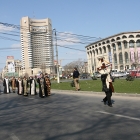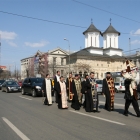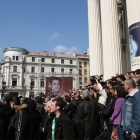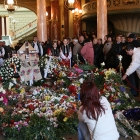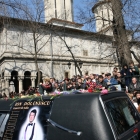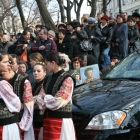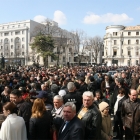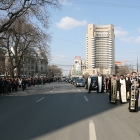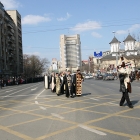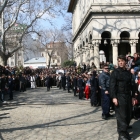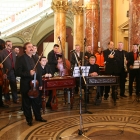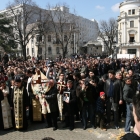Thousands at the funerals of famous singer
A large crowd of many thousands of people accompanied the late singer Ion Dolănescu in Bucharest in a cortege to the church and cemetery. Ion Dolănescu was the most famous singer of folkloric music, a genre that is still immensely popular in the country. One might say that this type of music is the European version of country music, but its roots go way back in time, at least one thousand years. Romania has one of the richest folklore in Europe, with thousands of songs, ballads as well as fairy-tales and myths. In fact, the existence of hundreds of original epic ballads, links the folklore of East Europe with Homeric tradition of „aeds” – some sort of interpreters who could create, memorize and sing countless verses relating myths and legends of heroes and battles. The tradition was kept in the Balkans from an early age, as the vocabulary suggests, with expressions that were in use in the first centuries of the Christian age and some myths from pre-Christian tradition. Until just decades ago, peasants were still creating long ballads and retold them around the campfire, with one of the last one telling the fall of Ceaușescu.
From this vast folklore with unknown authors, who repeated and chiseled ancient themes, in the last century emerged professional artists. They were at first accompanying weddings and village Sunday dances – called „hora”, from the traditional dance in large circle. Landowners and princes in the late middle ages lived in an oriental style and started to cultivate their own professional court music. These fiddlers, called „lăutari” (from a string instrument) combined Romanian folklore with a more cosmopolitan mixture from all the Balkans, Turkish and Oriental themes. These fiddlers would exchange themes and styles with local folklore that was derived from creations of shepherds singing from flute while traveling across mountains, or with the creations of farmers during the winter months. Some agricultural activities required indoor work, such as processing the harvest or weaving, which took a long while, and the most talented peasant would delight the audience with their voice, jokes or folk tails. Some activities were segregated by sexes and useful initiatic information was acquired this way – such as young women learning bedtime stories they would tell their children.
In the XX century, the two streams of folklore grew together but in a slightly different way. The fiddlers became singers of urban folklore, with many foreign influences, performing in pubs, inns and at weddings. Many times these fiddlers were of Gipsy origin, but not necessarily, and they would dress in regular city clothes. From these singers, the phenomenon of „manele” was developed in the last decades. It blended traditional urban folklore, that used to be played with violin, accordion, bass and dulcimer, with modern pop music, using keyboards, drums, sometimes guitar. The tones of this controversial music used Oriental tunes but also disco and even hip hop.
The traditional Romanian folklore, on the other hand, well illustrated by Ion Dolănescu, remained the music of the village and peasantry. Singers continued to dress in traditional garments of the numerous regions composing Romania, used orchestras usually of violins, accordions. Communists allowed and even encouraged this music especially in their late decades, after shifting from internationalism to nationalism. They even tried to use it as part of their propaganda, with more artificial lyrics exhorting work and a false sense of happiness. The people were not convinced by this artificial type of folklore, but continued to appreciate the authentic one, which has always been melancholic, poetic and often humorous. Romanians call this type of music „popular” – meaning both people’s music and with a large audience. Though foreign music is dominant in the lives of young audiences, the three local styles – Romanian folklore (popular music), old fiddlers music („lăutărească”) and the new Gypsy pop music („manele”) are still on high demand.
Mai multe despre: Events • folklore- Home Page
start page - Architecture
landmark buildings - Sacred architecture
places of worship - Nature
landscape photography - Concert
performing artists - Christmas
Santa Claus pictures
- Jooble
jobs for photographers - Escape
an out of control blog - Merry Christmas
The best organizer of Christmas parties - Astro photo
Eclipse hunting and astrological photography



